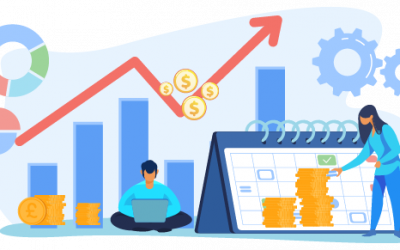In today’s digital landscape, businesses face the ongoing challenge of managing their data effectively. One crucial decision they must make is determining what should stay within their data centers and what can be migrated to the cloud. At OpenSys we help you navigate this decision-making process by highlighting the advantages and disadvantages of both data centers and the cloud. By understanding these factors, you can make informed choices that optimize your data management strategy.
Data Centers: The Traditional Hub
Data centers have long served as the backbone of organizations’ IT infrastructure. They require a heavy infusion of CAPEX over time and generally require a small army of people to run, maintain and improve.
Here are some advantages and disadvantages to consider:
Advantages:
1. Direct Control: By hosting your data in a data center, you retain complete control over your hardware, software, and security protocols. This control can be crucial for organizations with specific compliance or regulatory requirements.
2. Low Latency: Data centers offer fast, low-latency access to your data. This is advantageous for applications that require real-time processing, such as financial transactions or scientific research.
3. Cost Management: For certain workloads, maintaining a data center may be more cost-effective than using cloud services, especially if you have predictable, consistent demand.
4 Cybersecurity: Cyber controls are in the company’s control. The company decides who can have access to critical systems and be able to control the level of access they have.
Disadvantages:
1. Scalability Challenges: Expanding or shrinking the infrastructure of a data center can be time-consuming and costly, requiring significant upfront investments in hardware and software upgrades.
2. Maintenance and Downtime: Managing a data center involves regular maintenance, including hardware repairs and software updates. These activities can lead to service interruptions and downtime.
3. Disaster Recovery: Data centers are susceptible to natural disasters or physical damage, which may result in data loss if adequate backup and recovery mechanisms are not in place.
4. Cybersecurity: There is always a risk of a cybersecurity incident such as a ransomware attack that can hold a company hostage and lock out users.
The Cloud: The Flexible Alternative
Cloud computing has revolutionized the way businesses manage and store data. Let’s explore the advantages and disadvantages of cloud adoption:
Advantages:
1. Scalability and Flexibility: Cloud services allow you to easily scale your infrastructure up or down based on demand. You pay for the resources you consume, enabling cost optimization and eliminating the need for upfront investments in hardware.
2. Reliability and Redundancy: Cloud providers offer high levels of redundancy and robust disaster recovery capabilities. Data is distributed across multiple data centers, ensuring data availability and reducing the risk of data loss.
3. Accessible Collaboration: Cloud-based platforms facilitate collaboration among geographically dispersed teams, allowing real-time sharing and editing of documents, and fostering productivity and efficiency.
Disadvantages:
1. Security Concerns: Placing sensitive data in the cloud raises security and privacy concerns. While cloud providers invest heavily in security measures, organizations must ensure proper encryption, access controls, and compliance measures to protect their data.
2. Vendor Dependency: Adopting the cloud means relying on a third-party provider, which introduces a level of dependency. Organizations must carefully select their cloud provider, considering factors like service-level agreements, vendor reputation, and data ownership policies.
3. Potential Cost Overruns: Although cloud services offer flexibility, organizations may experience unexpected costs if usage is not monitored and managed effectively. Unoptimized resource consumption can lead to budgetary challenges.
Determining What to Move and What to Keep:
To make informed decisions about what to migrate to the cloud, consider the following factors:
1. Workload Characteristics: Assess the requirements of your workloads, including data sensitivity, performance needs, scalability, and geographic distribution.
2. Cost Analysis: Evaluate the financial implications of running workloads in a data center versus the cloud. Consider factors such as upfront investments, maintenance costs, and resource consumption.
3. Regulatory Compliance: Determine if your organization needs to comply with specific regulations that govern data storage and management. Some data may need to stay within a data center due to regulatory restrictions.
4. Future Growth and Flexibility: Anticipate your organization’s future needs. Consider whether the scalability and flexibility offered by the cloud align with your growth plans.
5. Resource Planning: Determine the availability and cost of the resources that you incur with each approach. Support and development resources play a crucial part in continuing to move your enterprise forward.
With OpenSys, you get access to our decades of knowledge where we have made such determinations. We have proprietary assessment methods on helping you decide what to keep in a data center and what to migrate to the cloud. We bring you facts that show distinct advantages and disadvantages of each approach by taking into consideration the context of your organization’s specific requirements. By striking the right balance between the two, we can help you create an efficient data management strategy that leverages the benefits of both worlds, ensuring security, scalability, and cost-effectiveness.




